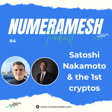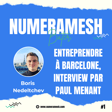
#11 - Pioneering VR & AR Technologies Since 2014
In this episode, we dive deep into the virtual and augmented reality world with a seasoned expert who has been pioneering in the field since 2014. Our guest has worn many hats—developer, entrepreneur, CTO—and has been instrumental in shaping the immersive technology landscape.
Starting as the co-founder of Immotionar, he developed ImmotionRoom, a groundbreaking full-body VR system using Kinects and VR headsets. It was a remarkable feat in 2014 when VR was still in its infancy. He then co-founded New Technology Walkers, a consultancy group specializing in cutting-edge technologies. He later became the CTO of VRROOM, where he spearheaded the development of an innovative platform for immersive shows. Notably, VRROOM achieved the #1 spot on the Pico Store during its alpha launch and facilitated record-breaking events like the Jean-Michel Jarre concert with 75 million views in 24 hours.
Our guest has also contributed to numerous AR/VR projects across various sectors and provided strategic consultancies to companies venturing into XR and the metaverse. His blog, "The Ghost Howls," is a celebrated resource in the VR community, earning accolades from HTC and Onalytica as a top VR influencer. He has shared his insights at prestigious events such as WCVRI, View Conference, SXSW, and AWE, and has been featured in major publications like Forbes and Huffington Post.
Join us as we explore his journey, insights, and the future of immersive technologies. Whether you're a VR enthusiast, a tech professional, or simply curious about the metaverse, this episode promises to be a fascinating and informative experience.

















